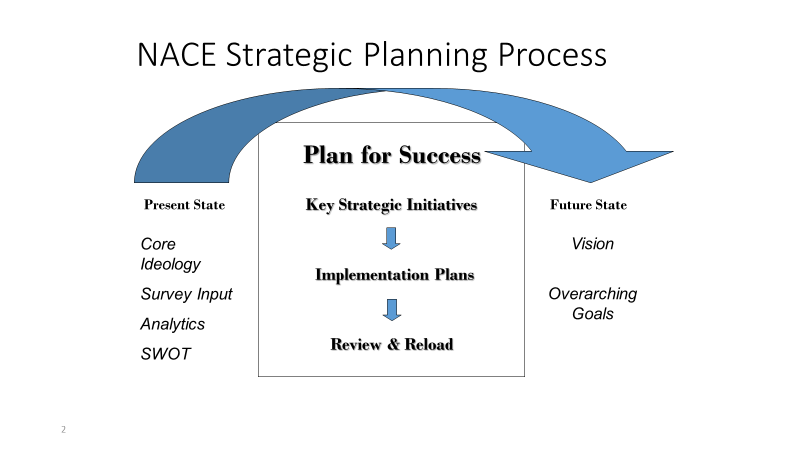We have defined strategic planning as a process that provides a roadmap for taking our association from a well-defined present state to a compelling and significantly different future state. Development and implementation of our plan for success is what makes strategic planning an effective, ongoing process, as opposed to a once-every-three-years event that results in lofty goals, with little thought on how to achieve them.

As illustrated in the model here, the plan for success has three elements: key strategic initiatives, implementation plans, and review and reload sessions. We’ll introduce all three steps in the plan for success process this month, and explore the current key strategic initiatives in detail in next month’s post.
Through this point in the strategic planning process, we have established an aspirational, timeless vision statement, and specific, measurable overarching goals that we fully intend to achieve in three years. The plan for success provides the roadmap for how we will accomplish our goals.
Perhaps some have heard the expression, “If everything is important, nothing is.” With a clear picture of our destination in mind (i.e., where we want to be in three years), the board focused on establishing the top priorities for the next year. Each of four teams were asked:
• What are the five or six most important things we need to focus on in the next year to move us toward our vision and overarching goals?
Once debated, the answers to this question become our key strategic initiatives for the year. For each key strategy, we create a brief description so that we all share a common understanding of what the key strategy is to address. But putting a label on a key strategy isn’t enough. We also have to create a definition of success that answers the question:
• What must be true one year from now for us to be able to look back and say, with any credibility, that we had a good year?
Key strategies and associated definitions of success establish in specific, measurable terms what must be accomplished in the next 12 months to move us towards the overarching goals we intend to achieve in three years. But annual goals must be broken down even further to make certain we are making continual progress, and adjusting our plans as circumstances evolve.
The implementation plan is a spreadsheet-based tool we utilize to break down our annual goals even further, into three to five tasks that need to be accomplished for each key strategy between each of the Board’s three face-to-face meetings.
At each board meeting, we conduct a review and reload session. The owner of each key strategy presents the work of the team and answers four critical questions:
• What was supposed to happen?
• Why was there a difference?
• What can we learn from this?
After debate and exploration, each key strategy team then presents a new implementation plan outlining the tasks to be competed in the next period.
As indicated, we will explore each of the three elements of our plan for success model, in detail, in the next three months.
Note: This article is maintained as part of an ongoing series of posts on the NACE web site.